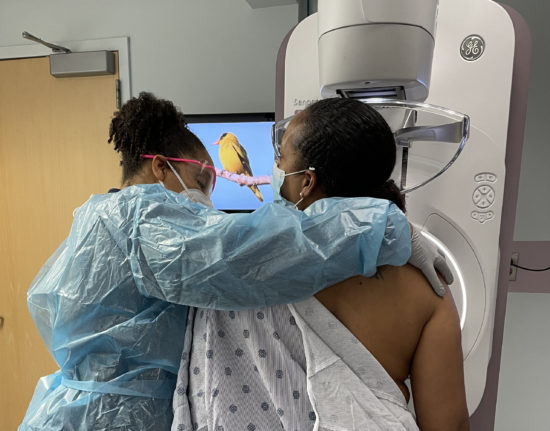Bermuda Hospitals Board performs first 3D mammograms
Thursday 13 May 2021: Bermuda Hospitals Board performed three-dimensional (3D) mammograms for the first time on Wednesday 12 May.
Earlier this month, GE’s Pristina 3D mammography unit was installed in the Diagnostic Imaging Department of King Edward VII Memorial Hospital, replacing the old 2D unit.
 “There was a real excitement in the air with our mammography team,” said Imaging Services Clinical Manager Renee Butterfield.
“There was a real excitement in the air with our mammography team,” said Imaging Services Clinical Manager Renee Butterfield.
“We are so proud that we not only have a 3D unit, but that our software is the most up to date of any on the island,” said technologists Carla Cann and Terri Farnan.
“We’re so pleased that everything is going to plan,” said Senior Imaging Technologist Terricca Smith. “All the staff are happy and so are our clients.”
Tanya Smith was the first person to have her mammogram using the new equipment.
“It was actually quicker than the last one that I remember,” she said. “It was great. I would say definitely come and get it done for sure. The ladies here make it so easy for you. You don’t even have to think about it. Before you know it you’re done and they are saying, ‘You’re done,’ and you are thinking, ‘Oh, ok that was so easy!’”
BHB upgraded its digital mammography unit to 3D to obtain clearer images. Research has shown that 3D mammography locates more cancers than its 2D predecessor and also reduces the number of false positives. The imaging unit creates a 3D picture of breast tissue using X-rays of several different angles around the breast.
A 2D mammogram creates a two-dimensional image from two X-ray images of each breast.
Installation of the Ivenia Automated Breast Ultrasound system will take place in the coming weeks. Combined with the new 3D mammogram it will provide better imaging of dense breast tissue.
“Better imaging produces clearer images and makes it easier to detect problems early,” said BHB Chief of Radiology Daniel Stovell, MD. “These upgrades represent a significant improvement in our service to the public.”

